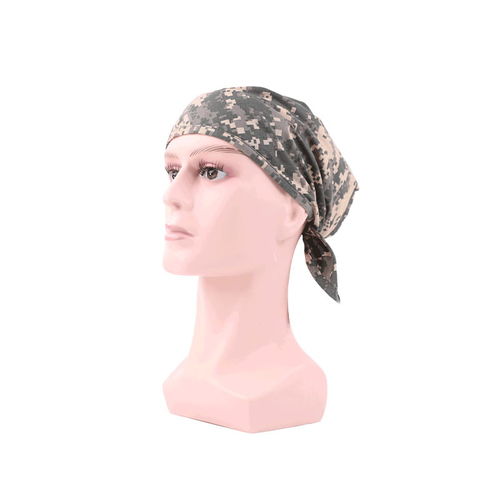The Science of Cooling
To understand how a cooling headband performs in high humidity, you first have to know how it works. Most headbands rely on one of two primary cooling mechanisms:
-
Evaporative Cooling: These headbands are made from special materials, often a blend of synthetic fibers, that absorb moisture and hold it close to the skin. As the water evaporates, it draws heat away from your body, creating a noticeable cooling sensation. This is the same principle that makes a wet t-shirt feel cold on a hot day.
-
Phase-Change Material (PCM): A less common but highly effective type of cooling headband contains specialized gels or crystals. When these materials are placed in a freezer or refrigerator, they solidify. As the headband warms up, the PCM melts, absorbing a significant amount of heat from your body. The cooling effect lasts until the material has completely melted.
The High-Humidity Challenge
High humidity poses a significant challenge for evaporative cooling headbands. The air is already saturated with water vapor, making it very difficult for the moisture on your skin or in the headband to evaporate. As a result, the heat-transfer process slows down dramatically. Instead of a refreshing cooling effect, you might find the headband just feels damp and warm, offering minimal relief. This is why you feel so much hotter and sweatier in humid conditions—your body's primary cooling system (sweating) is less effective.
The Solution: A Phase-Change Advantage
This is where headbands with phase-change materials have a distinct advantage. Their cooling mechanism is independent of external humidity. The PCM inside the headband will melt and absorb heat at a set temperature, regardless of how much moisture is in the air. For instance, a headband designed to cool to 59°F (15°C) will do so whether you're in a dry desert or a steamy jungle. The cooling effect will be a consistent, tangible drop in temperature against your skin, providing reliable relief even when evaporation fails.

A Practical Guide to Choosing and Using Your Headband
If your primary use for a cooling headband is in humid environments, here’s what to look for:
-
Prioritize PCM: If you live in a climate with high humidity, a PCM-based headband is a far better investment. While they may be more expensive, their performance is reliable and predictable.
-
Opt for Breathability: If you go with an evaporative model, choose one with a highly breathable weave. This can slightly improve its performance by allowing for what little evaporation is possible.
-
Pre-Cooling is Key: For both types, but especially for PCM models, make sure you properly activate or pre-cool the headband before use. A frozen headband will give you a head start on cooling and extend the period of relief.
In conclusion, while an evaporative cooling headband may struggle to work efficiently in high humidity, a headband with phase-change materials provides a consistent and powerful cooling effect that is not impacted by the surrounding environment. So, when the air is thick and heavy, you don't have to suffer—you just need the right gear.

 English
English 简体中文
简体中文







 3rd Floor, East Gate, No. 2599 Park Road, Sheng Ze Town, Wu Jiang District, Suzhou City, Jiangsu Province
3rd Floor, East Gate, No. 2599 Park Road, Sheng Ze Town, Wu Jiang District, Suzhou City, Jiangsu Province  +86- 0512-63519080
+86- 0512-63519080
 +86-13584404311
+86-13584404311  FQsales1@163.com
FQsales1@163.com